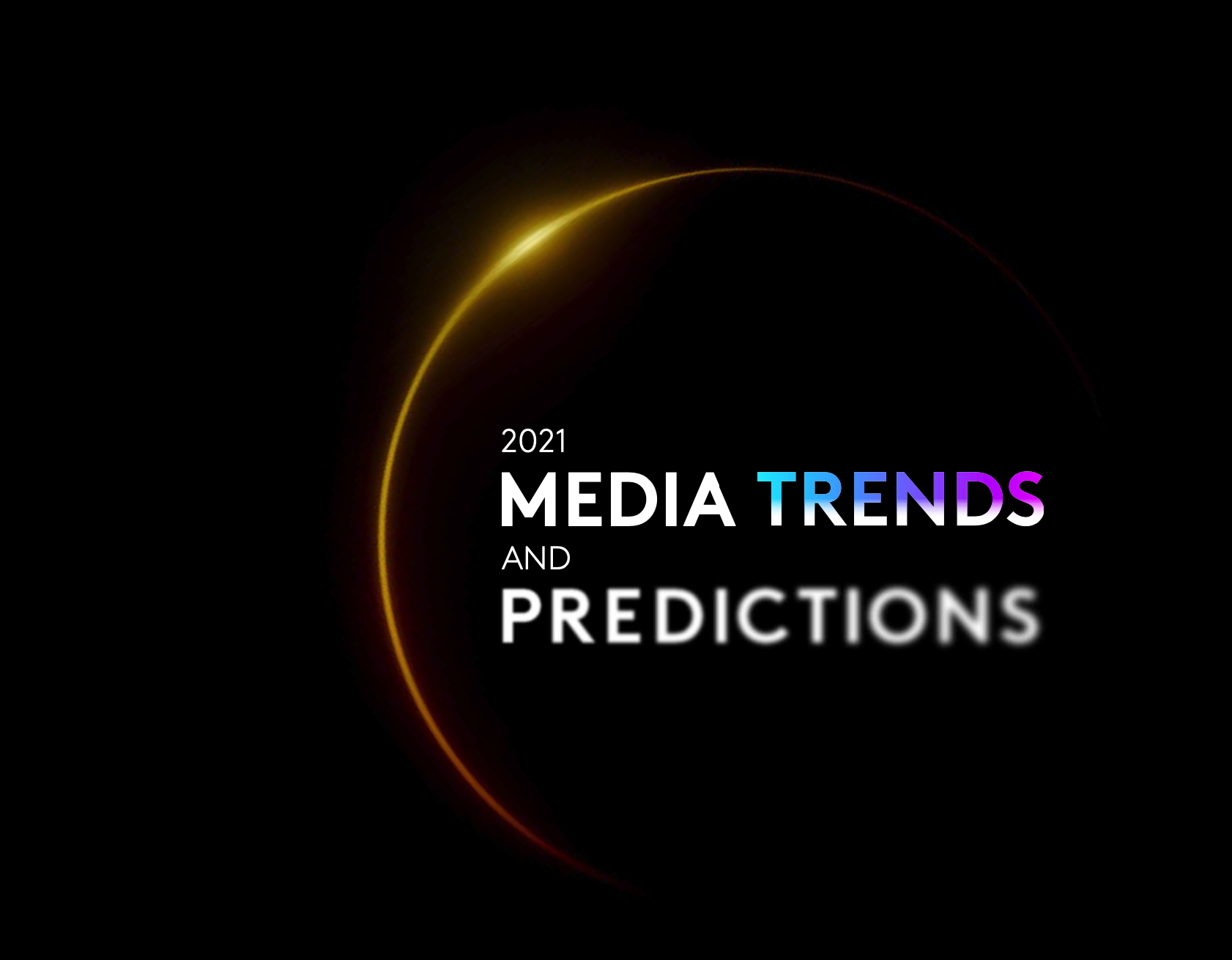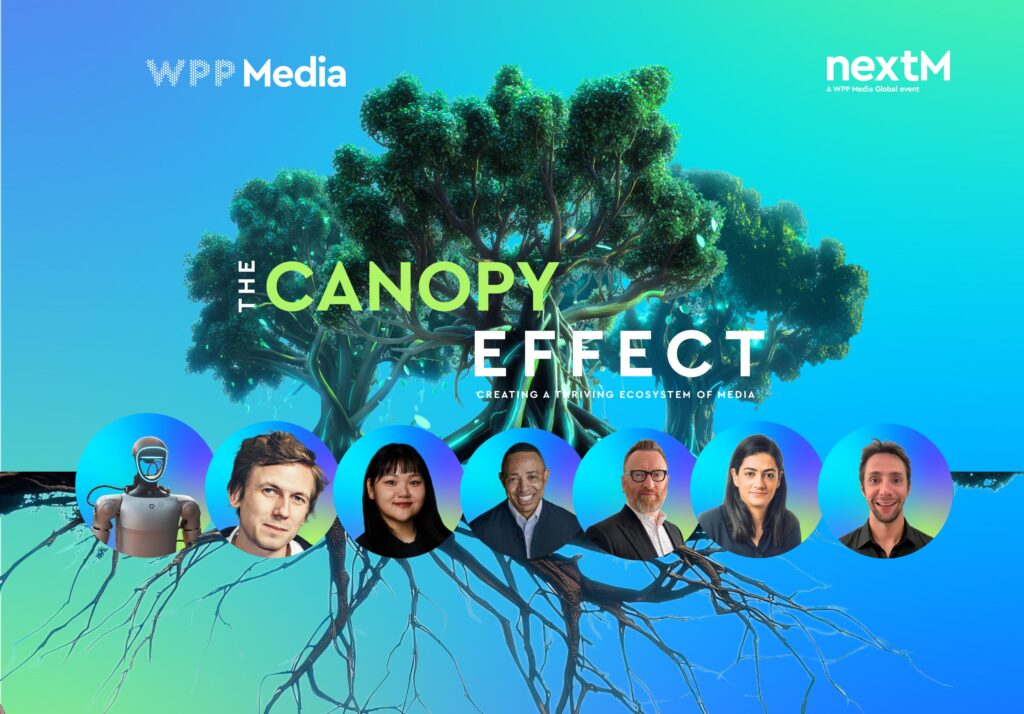The developments in 2020 happened almost instantaneously. Decades' worth of innovation happened in a few short months and everyone's reliance on digital media increased drastically. Based on this development, Kantar's Media Trends and Predictions 2021 report looks at the three main themes are emerging in the media sphere:
- Media pivot – where industry changes are forcing a change of direction or approach
- Media performance – where the increased challenges of measurement and effectiveness are addressed
- Media people -where we focus on audience and data.
Media Pivot
Audience Behaviors, Industry Dynamics – Stick or Twist?
The lockdown measures implemented worldwide created a drastic change in the consumer's media consumption. Data from Kantar’s COVID-19 Barometer showed that in 30 markets, as the pandemic progressed, claimed media consumption grow across all in-home channels. In April alone, internet browsing increasing by 64%, online video by 54%, and higher social media engagement up by 56%.
But at the same time, many consumers were also worried about their future and the economy and lack of consumer confidence also impacted advertising investments. Advertising spend currency reported a 35% decline in ad revenue for April and May in the US compared with 2019. While some categories invested heavily in more advertising, the travel sector was down by 80% in Q2 as quarantine measures enforced less appetite for travel.
Kantar’s Media Reactions study among global marketers shows that the pandemic is likely to have a lasting impact on ad spend patterns: marketers plan to invest more in digital as we move into 2021, for instance. While consumer behaviors are starting to return to the 'old normal', the stick or twist will vary by audience, media, and category.
E-commerce and Media – Friends or Frenemies?
The COVID-19 pandemic has accelerated double-digit eCommerce growth globally, with new consumer behaviors emerging. 40% of shoppers are willing to shop online rather than offline and brands have to alter their strategies in order to match this shift. Globally, 58% of consumers use social media and community forums to browse and research about what brands to purchase from.
The report projects that online-to-offline (O2O) business in China will grow by 64% by the end of the year, with grocery O2O growing at 155%. With consumers spending more time online, browsing through social media and video apps, new eCommerce business models involving live-streaming and the integration of social media and eCommerce (social eCommerce) have grown rapidly and e-commerce giants such as Amazon and Alibaba have already invested in the potential.
Smaller brands and those targeting the youth market use content platforms (e.g. Facebook, TikTok) and social networks not only to accurately target their consumers and post interesting content but also to convert them into buyers through either their store or an integrated e-commerce engine. These trends have impacted how brands plan their media investments, with more budgets allocated towards digital.
In order to succeed, brands need to achieve an efficient omnichannel media presence to influence consumers across the funnel. They must go beyond upper-funnel activities and use data to activate consumers across the full funnel on social media. The change in market dynamics will help smaller brands capture market share from the giants. Alternatively, the giants need to be more agile and utilize community-powered platforms like Facebook Shop and WeChat social eCommerce in conjunction with influencers during promotion periods. Brands also need to reimagine direct-to-consumer with an omnichannel strategy to provide the right consumer experience.
Democratizing Data
Data has never played a more important role in guiding businesses through uncertainty, especially in the year 2020. Media teams are still trying to navigate the deluge of data as more regulatory permissions and frameworks continue to be introduced. The goal is to create a formal system illustrating how data is going to be shared and used so that marketers can utilize the data they acquire in order to make more strategic decisions. Marketers need to think about quality, focus, and access as the key components of a purposeful data strategy.
The report claims that there is a growing trend towards democratizing data but it’s not moving fast enough. 51% of marketers still feel that they don’t have all the data they need to make decisions in their roles,
As we enter into 2021, democratizing data further will take many forms. Media professionals need access to data that’s customized to the necessary functionality for decision making – and products need to respond to that need. But acquiring data isn't the be-all and end-all. Marketers must turn data into actionable insights to avoid the paralysis of analysis where we keep going deeper to try to prove everything with the information we’ve got. Brands that invest in an accurate understanding of shifting consumer attitudes towards media channels and brands, alongside their own biases and shifting consumption patterns, will chart a path to growth in the future.
Media Performance
The social media dilemma
The industry is focused on offerings revolving around social media and building relationships with a wider set of influencers. Social media stands as the most cost-effective medium for advertising. It offers creative opportunities to disseminate and amplify paid and earned messaging which was particularly beneficial during the lockdown when brands shifted the ways through which they reach consumers.
The increase in social ad spend will continue. Story formats, for example, enjoyed a 29% investment increase this year, with expectations to nearly double in 2021. But with 75% of consumer touchpoints coming from outside the paid media sphere, social media alone won’t build a relationship with your audience. Campaigns are strongest when they reach across multiple channels in a believable and consistent manner.
Emerging digital platforms will gain more importance within holistic communication strategies and overall media planning, as brands embrace more authentic and direct ways to engage with consumers. Influencers will be seen as a long-term strategic opportunity, rather than just a short-term tactic.
Creative context takes center stage
With media consumption habits shifting dramatically and many media budgets shrinking due to COVID-19, where should advertisers place their ads to maximize effectiveness? Realizing anew that where their ad appears is just as important as what it says, advertisers and agencies are swamped with choice and conflicting and contradictory evidence about which placements work best. Context is more important than ever as media spend shifts rapidly across channels.
As digital channels continue to receive more investment in comparison to the traditional mediums, advertisers feel less confident in their overall media mix (now only 49% confident, down from 56% in 2019). But it’s not dampening enthusiasm for change, with many marketers (53%) now ‘more willing to try something new’. Some 96% believe the pandemic will have long-term strategic implications: primarily an increased focus on campaign effectiveness and more investment in digital media for greater agility.
The latest developments in digital contexts should appeal to advertisers, with TikTok, Instagram, and Snapchat being popular advertising environments for consumers, and delivering exceptional brand-building performance.
In the race to stand out in increasingly cluttered media environments, advertisers and agencies will accelerate their adoption of the latest media channels and formats. Content creators will need to focus their efforts on the platforms that provide the best value for them, rather than trying to customize content to every platform. Online video will be the single biggest winner, and there will be continued growth in the higher-reach digital video environments like YouTube. Brands and their agencies must invest more time and effort in the careful adaptation of content across contexts. Increased emphasis on purpose across all channels will result in advertisers and agencies holding media partners to higher ethical standards than ever before. They will be seeking like-minded corporate partners as well as media environments that match their own brand-level aspirations.
Infused analytics
In 2020, consumers went through waves of heightened anxiety and disruption due to COVID-19. This led to a 40%+ increase in purchases across hygiene, health, groceries, and online entertainment services in China. The pandemic has accelerated consumers’ re-evaluation of the brands they buy, heightening their expectations in terms of social justice and environmental responsibility. Brands need to predict how best to align campaign messaging to signal trust and integrity while communicating brand values and building long-term equity.
Analytics infuse all aspects of media and communications: campaign messaging, creative optimization, and selection of media channels/platforms that will resonate most. Brands and organizations also express a greater need for analytics to guide an optimal mix of touchpoints and channels – going beyond paid media to include sponsorships, brand partnerships, influencer content, PR, and owned brand assets: the very channels where consumers show greater receptivity towards advertising
The report predicts significant growth in the media industry’s use of analytics to drive optimal investments as media and marketing professionals adapt strategies to deliver results with smaller budgets. Ensuring your brand is top-of-mind in the short-term while strengthening core brand equity will be key to a balanced strategy, making trade-offs between levers to align with consumer receptivity. There will be a more central role for corporate sponsorships, experiential events and philanthropic efforts that generate earned media opportunities to reach consumers.
Tough cookies
There's no question that the death of the third-party cookie will disrupt the advertising industry but the impact is still not yet fully understood. While 2021 is the year that digital ad spend is forecast to become truly dominant globally, the digital ad world gets tougher to target and measure. Google’s Chrome browser will phase out cookies over the next 18 months or so, and Apple will only allow access to consented users’ IDFAs (Identity for Advertisers) from early 2021. This exacerbates uncertainty as to how exposure data can be derived to assess campaign effectiveness.
Research from Kantar reveals a slightly greater concern than last year about the impact of a cookieless world, but most especially among media owners (publishers), where 64% are worried. Some 48% of marketers worry their companies won’t be able to provide impactful performance without cookies. And yet, only 40% indicate their companies are preparing for this. Consumers on the other hand are conflicted 54% like advertising tailored to them while 56% are concerned about privacy.
The report predicts a new, hybrid world of ad effectiveness measurement in 2021. Direct integrations with publishers can gather exposure data on permissioned panelists in an anonymized and privacy-compliant way where possible. But where publishers aren’t ready, validated probabilistic and analytics-based modeling at scale will fill in the gaps. The major platforms will continue to offer digital effectiveness and targeting solutions based on their own siloed data, but this won’t answer advertisers’ more holistic campaign effectiveness questions. In this new paradigm of regulatory-led privacy initiatives, alternative measures like fingerprinting and plug-ins will only be effective in the short term.
Media People
The Boomerang subscriber
2020 has seen numerous new entrants to the subscription video-on-demand (SVOD) space, driven by the allure of regular, reliable income that these business models are designed to bring. However, consumers increasingly see SVOD platforms as interchangeable. The boomerang consumer is born and these platforms will need to win their loyalty in order to survive.
With the SVOD space increasingly crowded, the streaming wars have entered a new level. Quibi called it quits before completing a year, wellness outfit Peloton is incorporating VOD into their customer-centric health offerings, Disney and HBO are skipping theatrical releases for streaming. Many of these developments are essentially trials, but early positive consumer reaction means they’re likely to stay.
Some 74% of SVOD subscribers mainly watch new series. But with content now available across multiple platforms, and a finite amount consumers are willing and able to spend, they increasingly need to make a choice: increase their number of paid subscriptions, switch from one platform to another, or dip in and out.
With the boomerang-subscriber trend set to increase, the role of the content aggregator will take center stage. Partnerships are key to survival which provide consumers the benefit to not have to subscribe individually to multiple services. Partner commitments from subscribers must be carefully judged, as these often mean fewer options to chop and change; nothing drives down advocacy faster than a consumer’s needs being unmet and no easy exit. This is no longer a winner-takes-all market, and collaboration will be essential for long-term success.
The audience in the stream
Media companies need to reach, engage and keep their audiences in a fast-changing market as the gaps in understanding the total audience continues to grow. Investment in how people are consuming content is no longer enough; it’s crucial to understand the audience behind the screen too. While broadcasters have experienced record viewing levels this year – they’re also expanding video-on-demand (VOD) offers to ensure audiences can access their premium content whenever, wherever, and on whatever screen they want.
Although viewing trends have gradually returned to pre-lockdown levels, co-viewing is still prevalent, and the report predicts that the audience overlaps between streaming platforms will grow.
Media trading currencies must reflect the reality and totality of audience behavior. Content providers and platforms must work together in response to changing audience behavior to ensure media planning and buying is based on the totality of the audience. This is ever more pressing as media companies like Disney move their streaming business to the heart of their growth strategy.
From activism to action
In these extraordinary times, brand purpose has never been more important. Kantar's Brand Z study finds that acting responsibly is the single largest influence on a brand’s reputation (49%1). Brands see activism as a way of connecting meaningfully with consumers, who tend to take a strong activist stance when deciding to buy something. This stance is a trend that has been accelerated by the coronavirus pandemic.
Social media’s role in brand activism is clear. With 78% of consumers using consumer-generated media as a source of news and information, it provides a unique space where consumers can become informed and engaged and express their views in a radical way. Brands have also become radical and work with recognized influencers aligned to their cause. But it can be risky and alienate consumers
As advertiser boycotts such as #StopHateForProfit have shown, a far closer alignment between what brands claim and the channel mix was chosen is increasingly important. Brands should consider how social platforms with critical mass can support your brand activism agenda, using influencers who align with your values.
In 2021, the shift from talk to action will move up a gear and this applies to brands as well as media owners; 41% of marketers believe that many online platforms don’t balance the right to free speech with a need to protect the safety of its users and advertisers.





